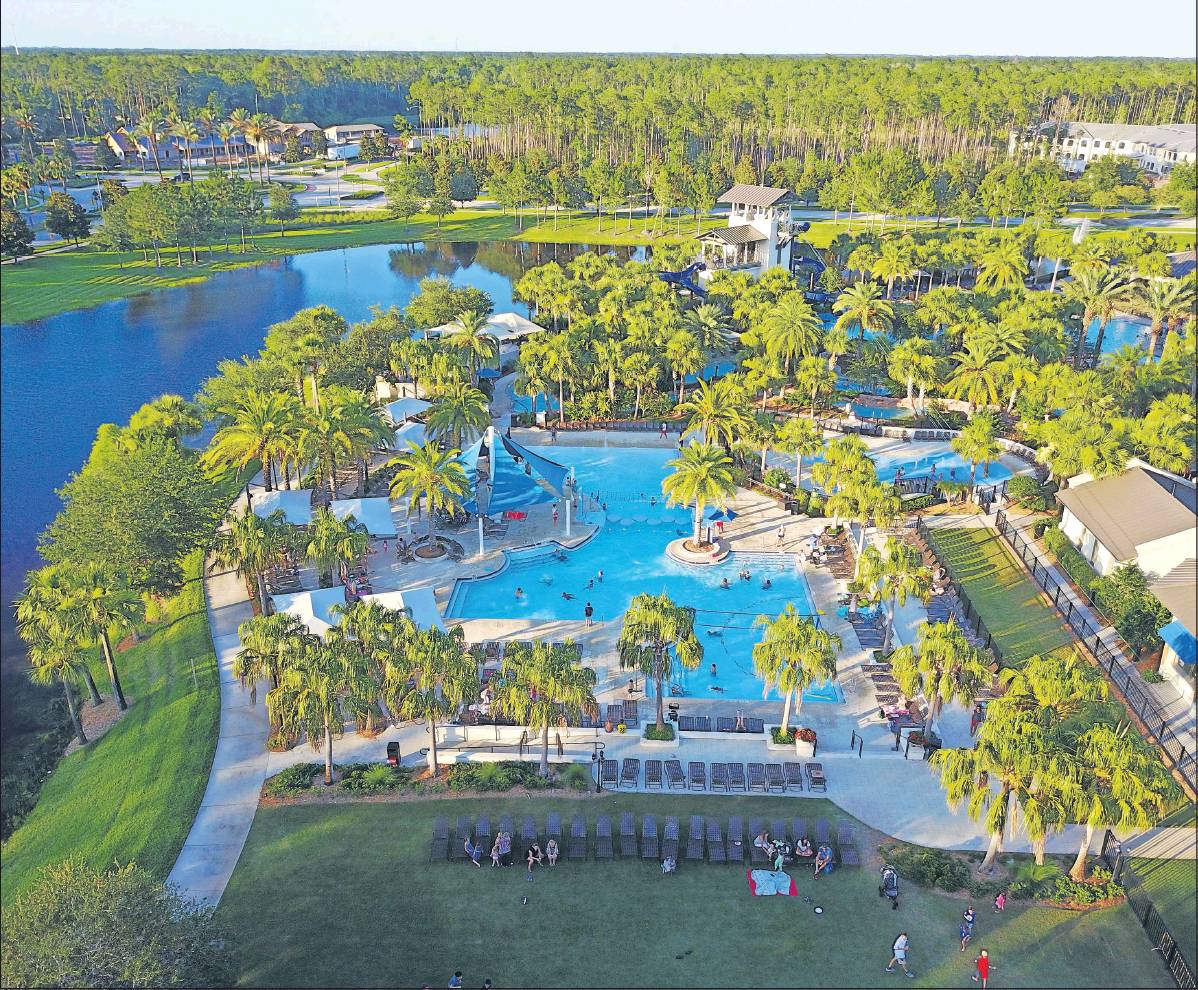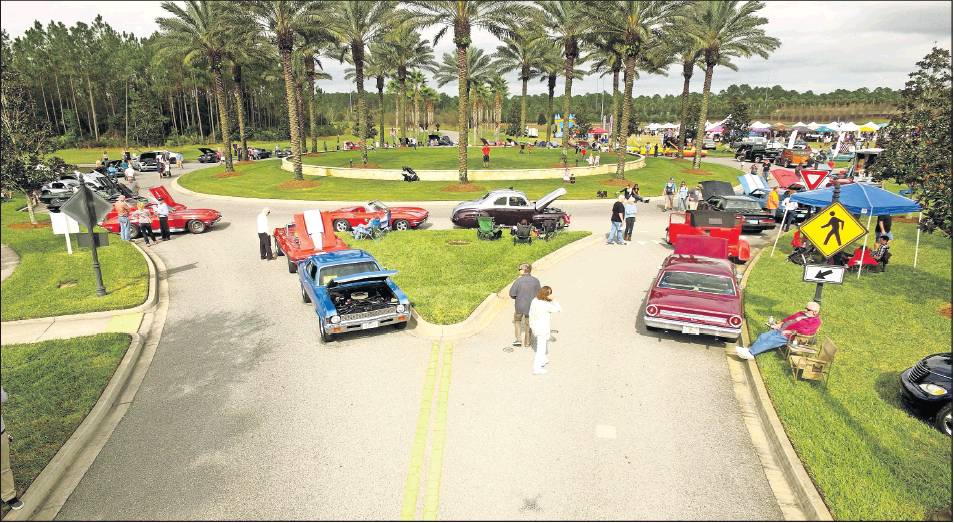ANOTHER VIEW
Nocatee: A great plan that came together
Mike Clark
Note to readers: Readers sound off on pros and cons of Nocatee on E4 today and on Saturday’s Editorial Page.
Quietly, Nocatee has come of age. Built for a maximum of 30,000 residents, Nocatee now has about 20,000 — about the population of Jacksonville Beach.
The value of its homes is approaching $3 billion.
And St. Johns County has collected more than $70 million in impact fees from Nocatee residents.
Impact is undeniable, impressive
In short, Nocatee has had an impact that is undeniable — and impressive.
Why is it called Nocatee, by the way?
The land was previously owned by the Nocatee-Manatee Crate Co.; it was used for timber production until 1984, when J.E. Davis bought it.
Most of the land is in St. Johns County, with a sliver of it in Duval.
Its own personality
While it’s still growing, Nocatee has already developed its own personality.
Based on a survey of about 2,000 households:
• Two-thirds of the residents come from outside Jacksonville.
• An overwhelming majority don’t commute to Jacksonville. About 4 in 10 are retired and about 20 percent have home offices.
• Almost 6 in 10 moved to Nocatee for the lifestyle.
• Asked if they would recommend Nocatee to family or friends, 96 percent said yes.
Nocatee is the rare large development that has maintained its focus on quality throughout the Great Recession.
One of the chief reasons, said Roger O’Steen, chairman and founder of the PARC Group, is that few developments of this size keep the same owner and developer throughout.
The idea for Nocatee originated during the 1990s when the Davis family began hearing from local governments and utilities interested in acquiring portions of its property.
O’Steen said the Davis family realized early on that if there wasn’t an organized plan in place for all of the land, it would “end up being a mess, one piece at a time.”
So the family engaged the PARC Group to come up with a plan for quality growth; the planners took 15 months and identified 29 major issues.
A major one involved water and sewer utilities. The Floridan Aquifer in that area is stressed. And there was no sewage treatment plant, either.
O’Steen said the Davis family did not want to put treated sewage in the Intracoastal Waterway, so an agreement was developed with JEA to provide the water, treat the wastewater off site and return it as reuse in a series of retention ponds that also provide flood control.
Doing things right
The big idea was to create a master planned community along the lines of Reston, Va., or Peachtree City near Atlanta.
So the Davis family and the PARC Group wanted a plan that was sustainable and addressed community needs.
O’Steen said he still remembers the directive he received from members of the Davis family as his firm began putting together the plan for Nocatee.
“Their statement to me (was), ‘We’re not after the last nickel. We want to make sure that this is done right,’” O’Steen said.
And that clear commitment drew early admirers: in a March 1999 Times-Union story on the planned Nocatee development, then-Jacksonville Mayor John Delaney marveled at the master plan.
“It would be wonderful if we’d been able to do the entire county that way,” Delaney said.
Meticulously planned
Doing Nocatee right also meant being good neighbors to St. Johns County.
For instance, there are more than 300 acres of parks in Nocatee, with about half of the acreage open to the public.
Mary Kohnke ran for the St. Johns County Commission with a list of requests for developers that she put on index cards.
In a subsequent meeting, the PARC Group told Kohnke it was carrying out all of her requests.
“I think we were all taken aback,” Kohnke told the Times-Union in 1999 regarding the developers’ open-minded approach.
Later, the PARC Group was asked to widen State Road 210 (Nocatee Parkway) so that it would serve as a hurricane evacuation route for Ponte Vedra Beach.
In the process of planning for a widened 210, the PARC Group developed a plan in which residents can travel within the entire community without using State Road 210.
They also planned for wide sidewalks, bicycle lanes and even for the heavy use of electric carts.
The Davis family also gave property for Ponte Vedra High School near Davis Park, even though it’s on the Nocatee side of the Intracoastal Waterway.
Michael Wanchick became administrator of the St. Johns County government in 2007 just before revenues were slashed by Amendment One and the recession. Ever since, the county has been straining to find revenues for its growth.
Nocatee, however, is an exception in that infrastructure is funded through a Community Development District and impact fees.
For instance, one Nocatee homeowner will be paying $16,000 in real estate taxes to the county but about $1,200 in CDD and trash collection fees for Nocatee alone.
And Nocatee’s developers have done their part, too, to support local infrastructure: they have loaned the county $750,000 for a fire station, another $750,000 for equipment and $350,000 for a kayak launch, restrooms and parking near the Intracoastal Waterway.
Nocatee still lacks some important retail pieces, but more offices and services are on the way. A new church for First Baptist is under construction; meanwhile, Baptist Health and a second health provider are planning large health parks.
Living up to its promise
Of course, not everyone is happy with Nocatee.
Some Ponte Vedra Beach residents blame Nocatee for their traffic congestion: they would ideally like to see a Nocatee exit off J. Butler Boulevard. But such an exit would be unrealistic and expensive: it would have to avoid the private Pablo Creek golf club, cross the Intracoastal Waterway and pass through sensitive wetland areas.
Meanwhile, the Sierra Club sued early in the game but later settled.
Janet Stanko, chair of the Northeast Florida chapter of the Sierra Club, said Nocatee was considered sprawl that would damage wildlife areas.
But in reality two-thirds of the property has been preserved — the Nocatee plan has actually received several environmental awards over the years.
So has the grand plan known as Nocatee lived up to its early promise — and promises?
“Without question,” Wanchick said.
The evidence — 20 years of responsible growth and a 20,000-strong population — backs him up.
Editorial Page Editor Mike Clark and his wife moved to Jacksonville in 1973; they moved to Nocatee in December 2007.


